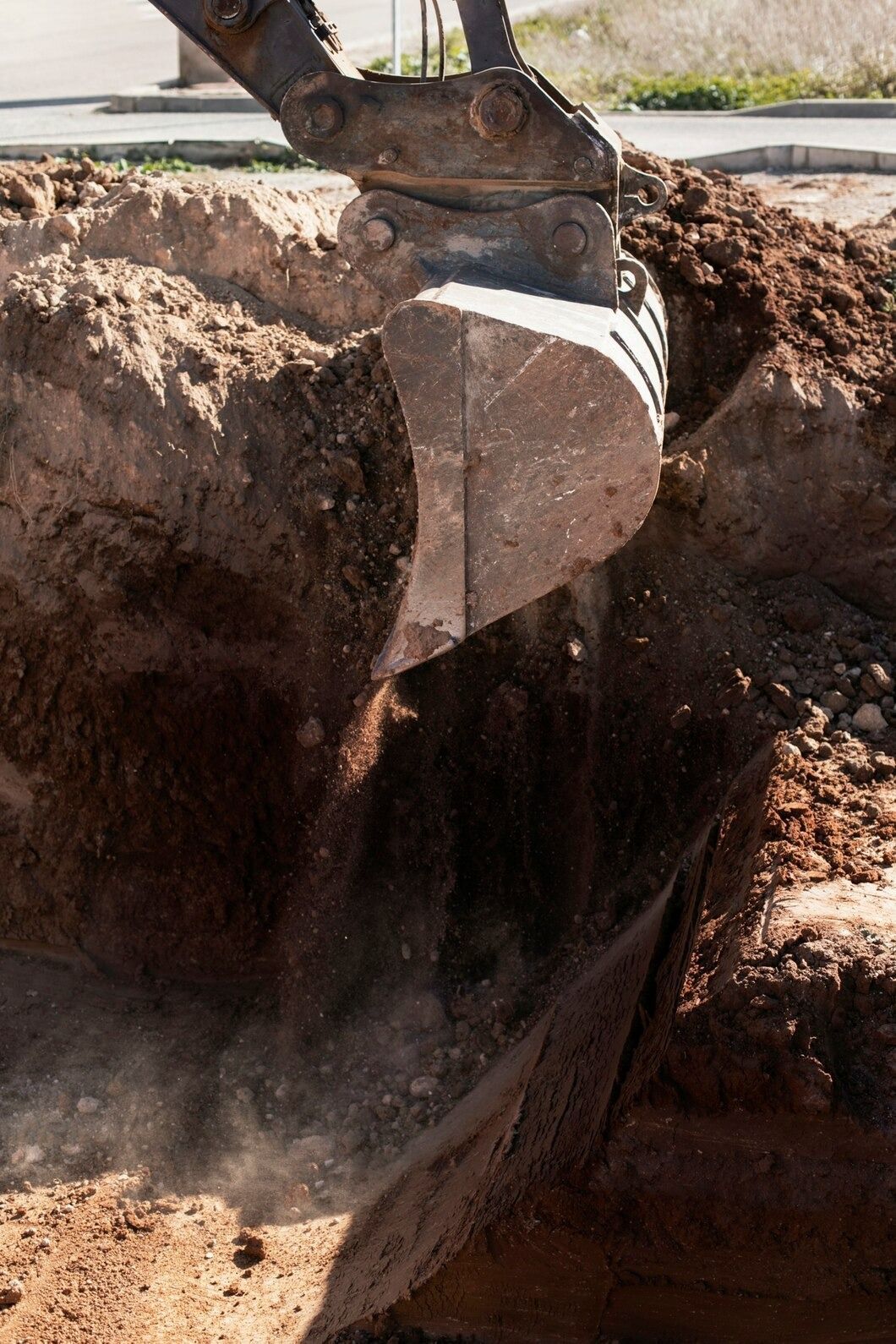Reliable Sewage and Septic Digging Services
Expert solutions for residential and commercial properties.
Detailed Service Breakdown
01
Sewage System Excavation
The process of sewage system excavation involves several critical steps to ensure the effective and safe installation of sewage pipelines and infrastructure. Initially, the site is surveyed to identify optimal layout and depth for the sewage lines, considering factors such as soil type, topography, and proximity to water sources. Once planned, the excavation area is marked, and any existing utilities are located and protected to prevent disruptions. Specialized heavy machinery is then used to dig trenches to the specified depths, following strict guidelines to maintain the integrity of the soil and surrounding environment. Throughout this process, care is taken to ensure that the trenches are sloped correctly to facilitate proper sewage flow and prevent blockages. After the pipelines are laid, the trenches are backfilled with soil and compacted methodically to avoid settling or shifting.
02
Septic Excavation
Septic system excavation is a detailed process that begins with an assessment of the site to determine the most suitable location for the septic tank and drain field, taking into account soil type, groundwater levels, and environmental regulations. The excavation involves carefully digging the ground to precise dimensions required for the septic tank and the leach field, ensuring that each component is placed at the correct depth and alignment for optimal functionality. Special attention is paid to maintaining the integrity of the surrounding landscape and minimizing disruption to the soil structure, which is critical for the proper absorption and filtration processes of the drain field. Once the trenches are prepared, the septic tank is installed, followed by the laying of perforated pipes in the leach field trenches, which are then covered with gravel to facilitate filtration and prevent clogging. The excavation site is then backfilled to ensure even settling and to restore the site’s original appearance, completing a process that is critical for a long-lasting septic system.
Why Choose our Sewage and Septic Services?
DeNoma Excavating understands the intricacies of sewage and septic systems, from planning through to execution, ensuring each project complies with all environmental and health regulations. We utilize advanced, precision equipment that allows us to work efficiently and minimize disruption to your property. Our attention to detail ensures that every installation is performed correctly, maximizing the longevity of your system. Additionally, our commitment to customer satisfaction and our proactive communication will provide you with peace of mind, knowing that your project is handled with the utmost care and professionalism.

How it works
-
What are the signs that I need a new septic system?
Signs that you might need a new septic system include slow draining toilets and sinks, sewage backups in your home, unpleasant odors around your property, unusually green or spongy grass around the septic tank area, and standing water over the leach field. If you notice any of these issues, it’s important to consult with a professional to assess the situation.
-
How long does it typically take to excavate and install a new septic system?
The duration of the excavation and installation of a new septic system can vary depending on the size of the system, the type of soil, and weather conditions. Typically, the process can take anywhere from a few days to a week. We strive to minimize disruption and complete the project as efficiently as possible.
-
Is there a best time of year to install a septic system?
The best time for septic system installation is typically during dry months when the soil is eThe best time for septic system installation is typically during dry months when the soil is easier to excavate and less likely to be waterlogged, which can complicate the installation. Spring through early fall is usually ideal, but we can schedule and plan installations year-round, depending on your geographic location and specific needs.
asier to excavate and less likely to be waterlogged, which can complicate the installation. Spring through early fall is usually ideal, but we can schedule and plan installations year-round, depending on your geographic location and specific needs.
-
What measures does DeNoma Excavation take to ensure compliance with environmental regulations during excavation?
DeNoma Excavation strictly adheres to all local, state, and federal environmental regulations to ensure every excavation and installation is compliant. We stay updated on the latest environmental requirements and use sustainable practices to minimize impact, such as controlling sediment runoff, protecting nearby water sources, and ensuring proper waste disposal. Our team also coordinates with environmental inspectors to ensure our projects meet all necessary standards.
-
Do I need a permit to install a septic system?
Yes, installing a septic system typically requires a permit from local health or building departments to ensure that the design meets all regulatory standards and environmental guidelines. DeNoma Excavation handles the permitting process for you, ensuring that all necessary documentation is filed and approved before beginning the excavation work.
